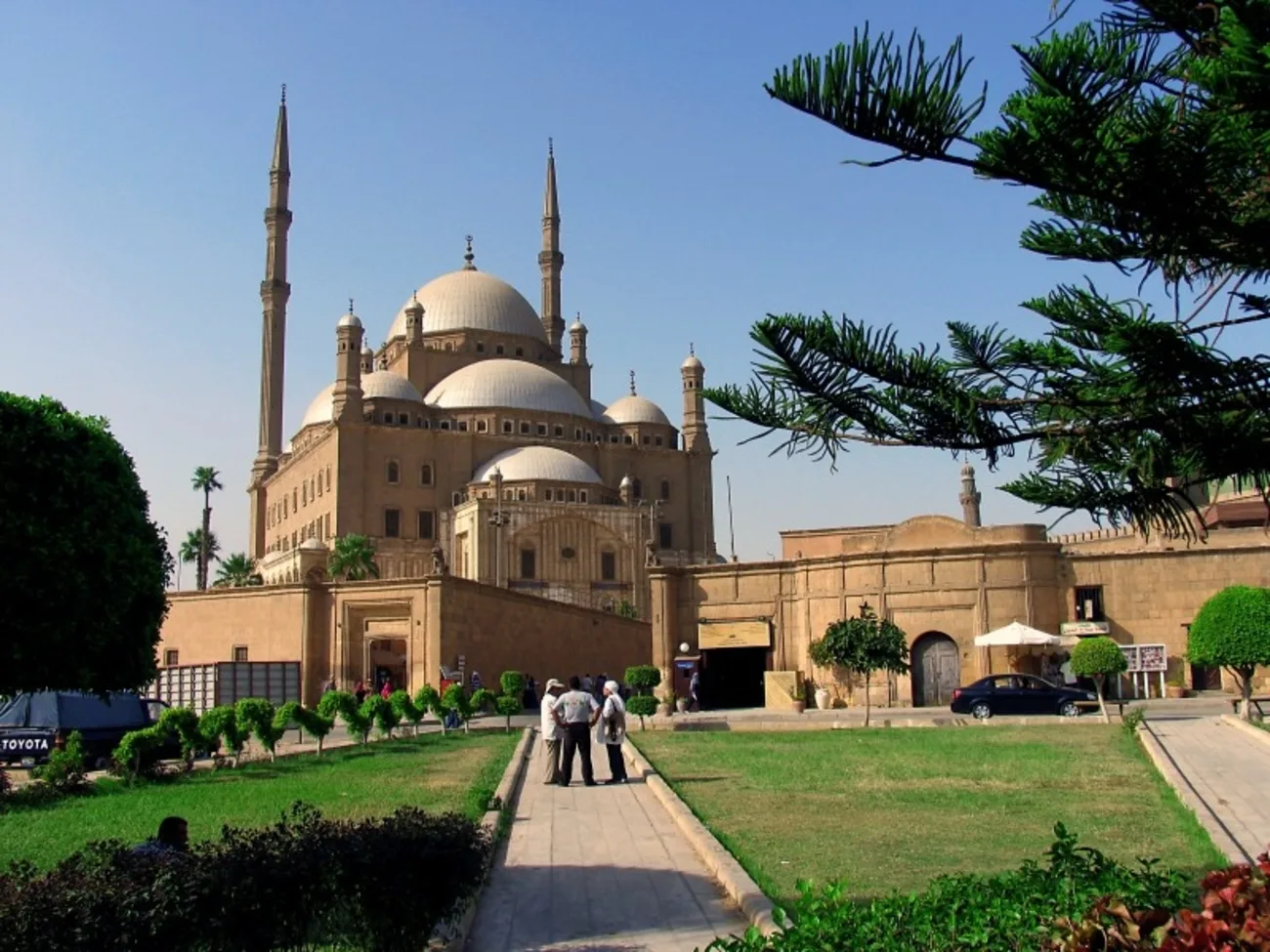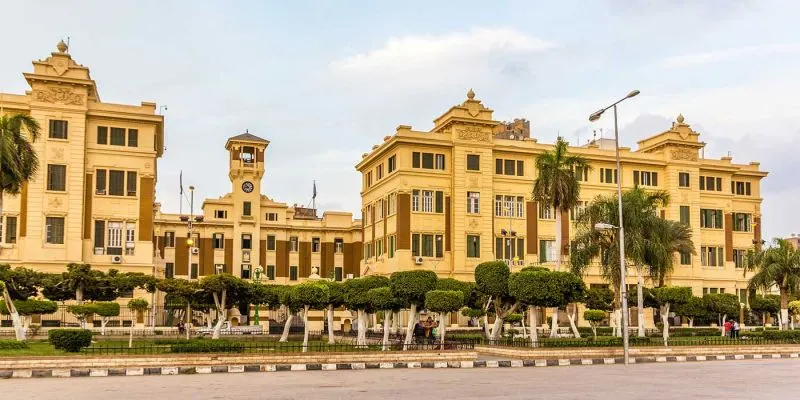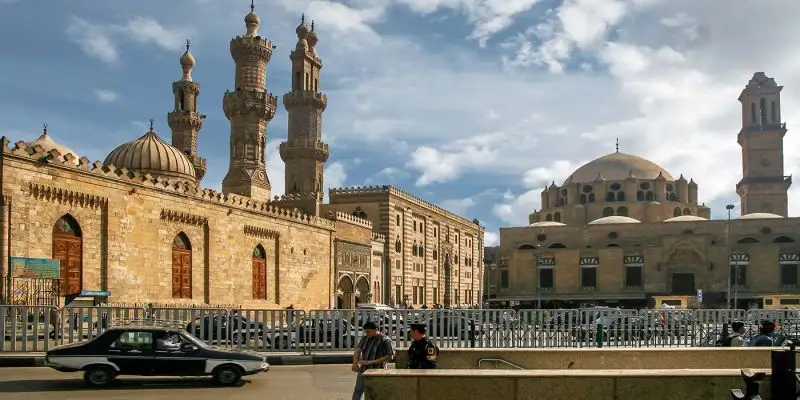-
Home
- Egypt
- Egypt Travel Guide
- Cairo Attractions
- Salah El Din Citadel in Cairo | Egypt
Salah El Din Citadel in Cairo | Egypt

Who was Salah El Din Al-Ayyubi?
Salah El Din (known as Saladin to European historians) overthrew the Fatimid dynasty in 1171 AD, establishing the new Sunni Ayyubid Caliphate. Given the threat of invasion by European crusader armies, Saladin decided to improve the fortifications of the city and in 1176 AD he began construction of a wall that would encircle both Al-Qahira (today Islamic) and Fustat (Old Cairo).
Salah El Din was born in 1137 AD in Tikrit, Iraq, he studied the Quran, theology, astronomy, mathematics, and law. As a member of the military at that time, he was trained by his uncle Asad-al-Din Shirkoh, who was a commander of the Zengid Dynasty.
Salah El Din was capable of taking on leading responsibilities during military campaigns, and that’s because of his extraordinary performance during battles. His great capabilities and cleverly executed tactics also allowed him to move on from being a soldier to be the King of both Egypt and Syria. His power enabled him to overthrow the Fatimids and maintain authority in Egypt.
When was the Cairo Citadel built?
The original construction of the Cairo Citadel or Citadel of Saladin began in 1176. The Citadel became the centerpiece of these great fortifications, protecting the city from the heights of the rocky hills that overlooked it. Completed in 1183 AD, Saladin’s Citadel served as the seat of government in Egypt for 700 years until Khedive Ismail moved into Abdeen Palace in newly constructed Downtown Cairo in the 1870s.

Photo of Abdeen Palace.
Salah El Din Citadel:
The Citadel looks very different today than it did in its original capacity as a fortress the Crusader armies. It has been expanded and remodeled by many different rulers. In the 14th century, Sultan Al-Nasir Muhammed built a mosque there that still bears his name and the Southern Enclosure of the fort next to Saladin’s original walls. The most noticeable changes came in the 19th century.

Muhammed Ali mosque:
However, when Muhammed Ali came to power, he was determined to erase the influence of the Mamluks, who had controlled Egypt for six centuries before him, and demolished their palaces within the fortress. He also built one of Cairo’s most recognizable landmarks.
His Alabaster Mosque, built in memory of a deceased son, towers over the rest of the complex. Its silhouette is the most dominant feature of Cairo’s eastern skyline. In addition to these two mosques, the Citadel also contains the National Military Museum, full of uniforms and weapons from Egypt long history, a Police Museum, and several more museums dedicated to the palace of Muhammed Ali.

Customize Your Dream Vacation!
Get in touch with our local experts for an unforgettable journey.
Plan Your Trip
There is also a third mosque in the Northern Enclosure behind the National Military Museum. Suleiman Pasha Mosque is not as large in size as either Muhamed Ali’s or Al-Nasir’s, but it is ornate decorated and a beautiful example of an Ottoman-style mosque.
Despite all of this, the highlight of the Citadel may be the view that it offers over Cairo. Looking out of the city, one can appreciate how the city earned its nickname, ‘The City of a Thousand Minarets and on a clear day one can even make out the outline of the Giza Pyramids in the distance.

Egypt Pyramids
- Dahshur Pyramids | Egypt Pyramids
- How Were the Pyramids Built?
- The Bent Pyramid at Dahshur
- Khafre Pyramid (Pyramid of Chefren)
- Pyramid of Khufu (Cheops Pyramid)
- Pyramid of Menkaure (Mykerinus Pyramid)
- Djoser Step Pyramid at Saqqara
- Giza Necropolis
- The City of Memphis, Egypt
- Saqqara Step Pyramid Egypt
- The Red Pyramid at Dahshur
ِAncient Egyptian History
- The Middle Kingdom of Ancient Egypt
- Alexander the Great | Egypt History
- Queen Hatshepsut
- King Tutankhamun Facts
- Salah Al-Din Al-Ayyubi
- King Ramses II: Facts, Accomplishments, Life and Death
- Sultan Mohammad Ali
- Amr Ibn Al-Aas
- The Old Kingdom of Ancient Egypt
- The New Kingdom of Ancient Egypt
- Greco-Roman Period
- Islamic Egypt
- Mamluk in Egypt & Ottomans History
- Egypt in the Modern Era
- Behind the Throne: Exploring the Life and Reign of Queen Cleopatra of Egypt
Cairo Attractions
- Al Aqmar Mosque in El Muizz Street
- Sultan Al Mansur Qalawun Mosque
- Al Azhar Mosque
- Mosque of Amr ibn al-As: Egypt’s Oldest Mosque and a Living Chronicle of Faith
- Bab Zuweila
- Museum of Islamic Art
- Mosque and Madrasa of Sultan Hassan
- Ahmed Ibn Tulun Mosque
- Bayt Al Suhaymi in Cairo
- Cairo Opera House
- The Coptic Museum in Cairo
- The Egyptian Museum in Cairo
- El Ghorya | Attractions in Cairo Egypt
- Ben Ezra Synagogue | Coptic Cairo
- Khan El Khalili Bazaar
- Old Cairo and Coptic Cairo
- Salah El Din Citadel in Cairo | Egypt
- The Hanging Church | Coptic Cairo
- Al-Muizz Al-Deen Allah Street
- Downtown Cairo
- Zamalek / Gezira
- Islamic Cairo
- Souk Al Khayamiya | Tentmakers Bazaar
Alexandria Attractions
- City of Alexandria
- El Ain El Sokhna | Red Sea Egypt
- El Sharkia Governorate History | Egypt Cities
- The Faiyum Travel Guide | Egypt
- Port Said Travel guide | Egypt
- Marsa Alam Information
- Aswan High Dam | The High Dam of Egypt
- Qaitbay Citadel in Alexandria
- Pompey's Pillar in Alexandria
- Why El Alamein Egypt Became World War II's Most Important Battlefield
- Alexandria Egypt | Pearl of the Mediterranean
- Alexandria Library Egypt | Bibliotheca Alexandria
- Experience the Heart of the Mediterranean: Your Guide to the Best Things to Do in Alexandria, Egypt
- Cairo Travel information | Cairo Egypt
- The Catacombs of Kom el-Shuqafa
- Greco-Roman Museum
- Lighthouse of Alexandria
- Luxor Travel Guide | Luxor City | Egypt
- Montazah Park Alexandria
- Red Sea Egypt | Red Sea Travel Guide
- The Western Desert of Egypt | Egypt Oases
Luxor Attractions
Aswan Attractions
Nile Valley
Red Sea and Sinai
Ports of Call
Egyptian Culture and Travel Info
Explore Cairo's museums, starting with the Grand Egyptian Museum (GEM) and then head to the Egyptian Museum.
Discover Giza Pyramids Tour Visiting the Pyramids and the Sphinx, then the older Step Pyramid at Sakkara. Witness the greatest of Ancient Egypt in Cairo all in one day.
Sooth your night with Cairo Nile Dinner Cruise and oriental dance show on board of Nile Cruise Restaurant, Admire the lights of Cairo while enjoying a dinner with a belly dancing and Egyptian folklore show.
Enjoy a camel ride at Giza Pyramids for 2 hours during the sun rise or sun set. Mount a camel and ride it through the desert to the base of the Great Pyramid. There are horses if a camel seems a bit intimidating.
Leave your ship in Port Said and head to Cairo for two days tours. See the Giza Pyramids, the GEM, and the Egyptian Museum.
Do it all in one trip. Start in Cairo, then travel by flight to Aswan and embark on your Nile Cruise and explore the majestic attractions of Egypt between Aswan and Luxor. End your tour with a relaxing time on Hurghada beaches.
Plan Your Trip!
You Might Also Like

Uncover the beauty of Al Aqmar Mosque Cairo. Learn about its history, architectural wonders, and essential visitor tips in this comprehensive guide.

Visit Sultan Al Mansur Qalawun Mosque in Islamic Cairo—Marvel at this Mamluk masterpiece and learn about its fascinating historical significance.

Uncover the significance of Al Azhar Mosque, Cairo’s grand mosque and prestigious university—a cornerstone of Islamic heritage and learning.

Journey into Egypt’s past at the Mosque of Amr ibn al-As. Learn its history and explore this cornerstone of Islamic culture in Cairo.

Journey through Old Cairo’s history at Bab Zuweila. Uncover stories, architecture, and secrets of this legendary city gate.

Explore the Museum of Islamic Art, Doha’s cultural gem. Witness stunning collections where the story of Islamic art and history beautifully unfolds.

Unveil the fascinating history of the Mosque and Madrasa of Sultan Hassan, Cairo’s iconic Mamluk monument celebrated for its grandeur and artistry.

Step into history with Ahmed Ibn Tulun Mosque. Learn about its stunning architecture, captivating past, and importance in Islamic culture.

Discover Bayt Al Suhaymi Cairo—an authentic glimpse into Ottoman life. Visit beit el seheimy for rich architecture, culture, and history.

Discover the history and charm of the Cairo Opera House, Egypt’s hub for music, ballet, and cultural performances. Plan your visit today.

The Coptic Museum lies behind the walls of the famous Roman fortress of Babylon in the ancient district of Cairo (Misr Al-Qadima).

Experience the marvels of The Egyptian Museum in Cairo. Uncover Egypt's treasures and find essential tips for your next visit here.

The complex was a built as a unique, multi-use space. It included the mosque and the mausoleum, but also a sabil that provided free water to the people, administrative space, and a covered market among other things.

Located deep in the winding alleys of Coptic Cairo, Ben Ezra Synagogue is the oldest Jewish temple in Cairo, dating from the 9th century AD.

No trip to Cairo would be complete without a visit to Khan Al-Khalili. The bazaar is loud, crowded, colorful, and exciting—full of all kinds of goods and shiny baubles.

The district of Old Cairo ( Masr al-Qadima in Arabic ) is Located in the south part of the city, on the right bank of the Nile opposite to the Island of Roda. Know More!

Salah El Din (known as Saladin to European historians) overthrew the Fatimid dynasty in 1171 AD, establishing the new Sunni Ayyubid Caliphate.

The most famous site in Coptic Cairo is the Church of the Virgin Mary, better known by its nickname, the Hanging Church. Learn more!

Egyptians refer to Downtown as Wust al-Balad, which can be poetically understood to mean “the heart of the country”. This crowded, bustling district of Cairo certainly lives up to the name.

Gezira is the Arabic word for island, but in Cairo, it is most commonly used to refer to a specific island in the middle of the Nile between Downtown Cairo and the area in Giza known as Dokki.

Islamic Cairo is the historic core of the city. When the Fatimid dynasty conquered Egypt in 969 AD, they constructed a new capital north of the existing city to serve as their administrative center.

Just beyond the southern walls of Fatimid Cairo across the street from Bab Zuweila stands a singular space in modern Cairo.

When the Fatimids took control of Egypt in 969 AD, high taxes and poor governance by the Ikhshidid Abbasidds, who had ruled Egypt since 905 AD, had ravaged the region and its capital, Fustat.









